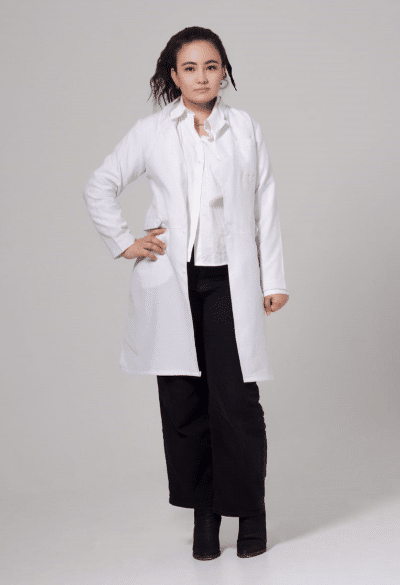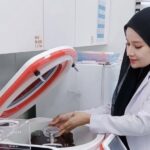By: Alex Nolan
We continue to talk about young scientists who move science forward and consider their work a true vocation. This interview is with Anna Dudkina – Doctor of Chemical Sciences. The scientific career of the young scientist already has a large-scale environmental project, which has yet to be in Kazakhstan or anywhere in the world.
Tell us about yourself
My name is Anna Alexandrovna Dudkina. I am a doctor of chemical sciences and founder of the American company Sci-INDUSTRY HUB. I am the author of more than 25 scientific publications, which are referred to in Scopus and Web of Science databases, including articles in Q1 and Q2 journals. As a child, I was a very thoughtful kid and constantly questioned myself about the desire to understand the world around me, the desire to answer fundamental questions, solve complex problems, or improve life through technological and medical advances. Science also offers the opportunity to travel into uncharted areas of knowledge, constantly discover new things, and develop professionally and personally.
What do you think are the most important skills and qualities for the modern scientist?
Science is a field where discoveries and technologies are constantly emerging, so scientists must love to learn and adapt to new information; it’s like a child’s spontaneity and curiosity. It is also necessary to be persistent, as scientific research is often associated with failures and the need to repeat experiments many times; it is important to overcome difficulties and not lose motivation.

Could you briefly explain the essence of your latest research project or development?
My doctoral work focused on a rapid method to visually analyze foods – mainly fruits, vegetables, and beverages – for heavy metals, trace elements, nitrates and antioxidants.
We have developed a non-discriminatory visual analysis method so that everyone can independently test food products for a wide variety of indicators with high accuracy without using special instruments or going to laboratories. For this purpose, we use the polymer “polymethylmethacrylate”—this is Plexiglas. We modify it so that the polymer acquires a 3D structure and allows us to place other reagents that interact with heavy metals, nitrates, antioxidants or trace elements.
Another advantage of the new method is that the reagents are incorporated directly into the transparent plate, but they are not a functional group of the polymer; in this case, the polymer is just a cellular container for the reagent. Such polymer sensors for analyzing agricultural products are relevant for large wholesale suppliers.
As a rule, trade networks purchase vegetables and fruits from large wholesalers. If retail chains have their own quality control system, wholesalers do not always, and even more so, producers and farms are excluded from this system. As a result, everyone suffers from low-quality products. Control of products for heavy metals, nitrates, and pesticides can be carried out at the place of purchase or directly in the field at the producer so that you can immediately decide whether to buy products or not.
The cost of one polymer sensor for on-site analysis does not exceed a few tens of dollars, which is 30-50 times cheaper than the traditional spectrophotometry method.
Why did you choose the USA to continue your career?
The US is renowned for supporting innovation and entrepreneurship, making the country attractive to launch your business or work in a startup. The country is home to some of the world’s best universities and research institutions, providing extensive opportunities for academic careers and development. All kinds of industries are represented in the US, from major IT companies and manufacturers to medicine and entertainment.
What are your plans for the near future in the US? Are there any specific goals you would like to achieve?
Development of a digital Sci-industry hub, creating a sustainable and efficient online platform that can serve as a meeting place, collaboration and resource exchange between users interested in various aspects of chemical technology, business, and innovation.
I am also developing a special smartphone app to help customers avoid misperceptions of the color of the indicator. The subjective component of vision is different for everyone. For someone – it is yellow; for someone else – it is green; if someone has vision problems and can not distinguish colors, the application will show well what is spoiled, what is not spoiled and how much more will be stored. Now, the development of the algorithm continues; in particular, as the author of the project, I am developing an application for smartphones. The exact timing of the project is still unknown.
How long does it take for a scientist to get their design to take on a life of its own?
Of course, the time from conception to realization of a new scientific discovery or development can be very different and depend on many factors. It can take from a few months to several decades. For example, the application of advances in information technology may begin as soon as a few months after the discovery, while theoretical developments in physics may wait years if not decades. It is always important to remember that science and technological progress are not linear processes and can lead to unexpected results and applications at different stages of development.
What trends or changes in your industry are you currently excited about?
Computer modeling and chemical informatics are rapidly growing fields that play a central role in modern chemistry and materials science. These areas use computer technology to model molecular structure, properties of substances and dynamics of chemical reactions and to analyze large amounts of experimental data.
What invigorates and drives you, and how do you recover from intellectual work?
Like any scientist, it brings me joy and satisfaction when the result of your work is successfully applied somewhere. You have made your contribution and realize that it is already in demand or will be in demand in the future. The best rest, I will be banal here, is a change of activity – sports and traveling.
What three books do you recommend to read?
“Суперинтеллект: Пути, опасности, стратегии” (Superintelligence: Paths, Dangers, Strategies by Nick Bostrom. This work deals with artificial intelligence (AI) issues, especially the possible creation of a machine that surpasses human intelligence in all areas.
“The Thoughts and Opinions of Benjamin Franklin” is a famous book in which Franklin shares his life story, including his efforts at continuous self-education and self-improvement.
“The Art of War” – Sun Tzu. This is an ancient Chinese guide to strategy and tactics that is applied to many areas of life.
Published by: Khy Talara

















